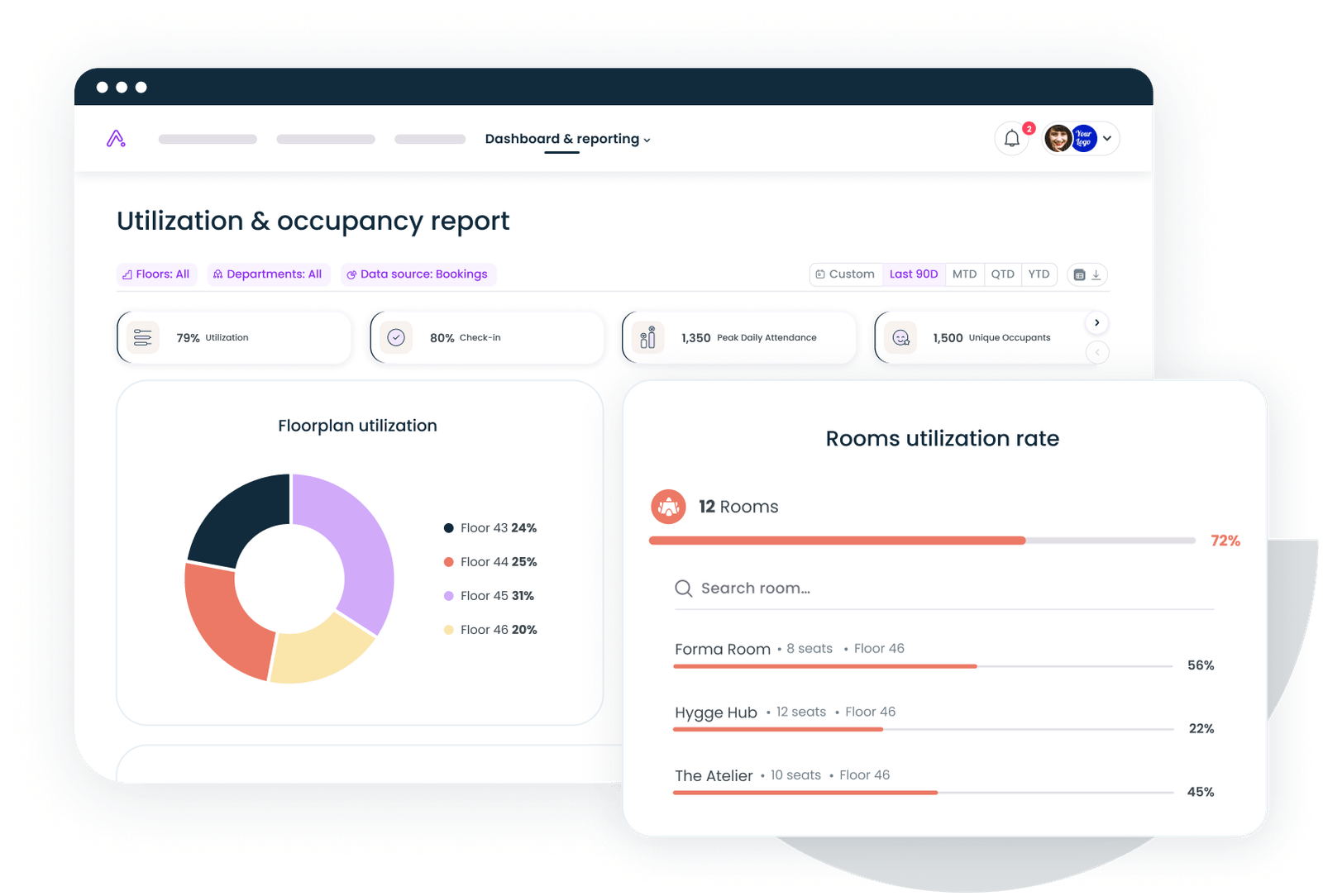The hybrid work environment has evolved from a pandemic necessity into the preferred work arrangement for most professionals. As of 2024, 53% of remote-capable employees work hybrid schedules, with 6 in 10 wanting this flexibility to continue. But hybrid work schedules require a deliberate strategy.
The companies with flexible hybrid work models that thrive aren't just allowing remote and onsite employees to split their time randomly. They're implementing hybrid work environment best practices that support team meetings, maintain workplace culture, and deliver better work-life balance alongside measurable business results.
This guide outlines 10 hybrid work best practices that have been proven effective, backed by data from Stanford, McKinsey, and Gallup research on what drives engagement, productivity, and retention in hybrid teams.
What is hybrid work?
Hybrid work combines remote and in-office work, allowing employees to split their time between working from home and coming into the office. Unlike fully remote or traditional office-based models, hybrid work environments give employees more flexibility to choose where they work best while maintaining face time for collaboration and relationship building.
The hybrid model can take different forms: some organizations use time-based schedules, where hybrid teams work two to three office days per week, while others adopt preference-based approaches, allowing teams to set their own hybrid work schedules based on project needs.
10 Hybrid work best practices
1. Establish clear communication
The hybrid office creates unique communication challenges: remote and onsite employees need different channels for different purposes, and without structure, important information gets lost.
Define which communication tools serve specific functions; for example, you can use Microsoft Teams or Slack for quick questions and save email for formal requests. Reserve video calls for meetings that require active listening. Set expectations for response times, especially if your team is in different time zones.
2. Invest in collaboration technology
Technology is the foundation of successful hybrid workplaces. From video conferencing, which must work flawlessly for hybrid meetings, to meeting room equipment like high-quality cameras, microphones, and screens, employees need technology to get their work done, collaborate, and achieve goals in distributed teams.
Apart from the tech we mentioned above, invest in a good project management platform to keep hybrid teams coordinated across locations. Then, introduce a desk booking and room scheduling software to optimize your office spaces and give employees visibility into when teammates will be on-site.

Learn how workplace analytics helps you track what's working, optimize your office layout, and make evidence-based decisions that reduce costs and boost engagement.
Read the guide
3. Create flexible (yet structured) policies
Your goal with hybrid work schedules should be to strike a balance between flexibility and structure. This can be achieved by defining core collaboration hours during which all employees should be available, regardless of their location.
Specify required office days if your hybrid model requires regular onsite presence. The key is clarity: employees should know what's expected, and, more importantly, why. Give employees guidance on what type of activities and meetings should happen when they're in the office, so they don't end up commuting to an office where they'll be taking Zoom calls all day. Document your hybrid work policy in writing and make it accessible to everyone.
4. Design purposeful office experiences
Whether employees have a choice about coming onsite or it's a mandate, the office needs to justify the commute. For workplace leaders, this means prioritizing collaboration zones over assigned desks, creating diverse spaces, and programming events, team meetings, and social time when teams are on-site.
Schedule team meetings and collaborative work for designated office days. If Tuesdays and Wednesdays are when your hybrid teams gather for project kickoffs and relationship building, those office days become meaningful. Reduce available desks to match utilization: most hybrid offices operate at 40% capacity, wasting significant real estate costs.
5. Support asynchronous work
Not everything needs to happen in real time. If there's one critical change that has emerged from shifting to hybrid, remote, and flexible models, it's that asynchronous communication is becoming the norm, regardless of where your teams are working from.
Documenting everything from company goals to decisions made in meetings changes how employees work, collaborate with others, move projects forward, and stay accountable and aligned. Recording meetings for team members to catch up, creating shared documents, and encouraging employees to communicate in writing are a welcome change to work culture and team management.
Track space utilization, coordinate team schedules, and make data-driven decisions about your workplace. Gable Offices gives you the analytics and booking tools hybrid teams need.
Explore Gable Offices
6. Build culture intentionally
Workplace culture doesn't happen automatically, and even less so for remote employees. Companies need to create experiences that include everyone, such as weekly check-ins, monthly social connection events, or quarterly offsite gatherings. Foster culture by celebrating wins and milestones across all channels, facilitating relationship building, training managers on leading hybrid teams, and improving the overall employee experience.
7. Measure performance by outcomes
Hybrid and remote teams require a fundamental change in how leaders and managers evaluate employee performance. Set clear expectations for what success looks like in each role by defining deliverables, quality standards, and deadlines, rather than measuring time spent.
Use regular check-ins to discuss progress, blockers, and support needs. Avoid proximity bias where on-site employees receive better reviews simply because they're more visible. Trust employees to manage their time according to the agreed-upon hybrid policy.
8. Prioritize work-life balance
The promise of a better work-life balance attracts many people to hybrid work models, but companies must actively support this shift. Encouraging employees to set and communicate working hours and get more control over their days is especially important when hybrid teams span multiple time zones.
Limit meeting overload by being strategic about when and why team meetings happen. Provide mental health resources and actively reduce burnout by monitoring workload. Survey employees regularly about their experience and act on their feedback.
9. Provide access to growth opportunities
Career development is also more complex for employees who work remotely, as they are often overlooked for promotions and leadership opportunities. To combat this, senior leaders need to make learning and development programs accessible in multiple formats, including live workshops, recorded sessions, and self-paced materials. Create formal mentorship programs that pair employees across locations and experience levels.
10. Gather data & iterate
The thing that makes hybrid and remote work both exciting and confusing is that there is no one-size-fits-all solution. A strategy deployed by one company doesn't guarantee success for another, and that fact requires workplace leaders to know their companies inside out and evolve their tactics based on data.
The data you'll need to track starts with space utilization, which helps you understand how and when employees use office spaces, as well as their in-person cadences. Then you need to look into business metrics like engagement, productivity, employee performance, and retention rates. Finally, survey employees about their overall workplace experience, the effectiveness of the office environment, and satisfaction with hybrid policies. Research shows that teams that set their hybrid work schedules together report 12% higher engagement.
Managing hybrid teams becomes easier with the right platform. Gable gives you desk booking, real-time analytics, and team coordination tools in one intuitive system, helping you optimize office space while keeping distributed teams connected.
Get a demo





.svg)





.svg)
















.svg)













